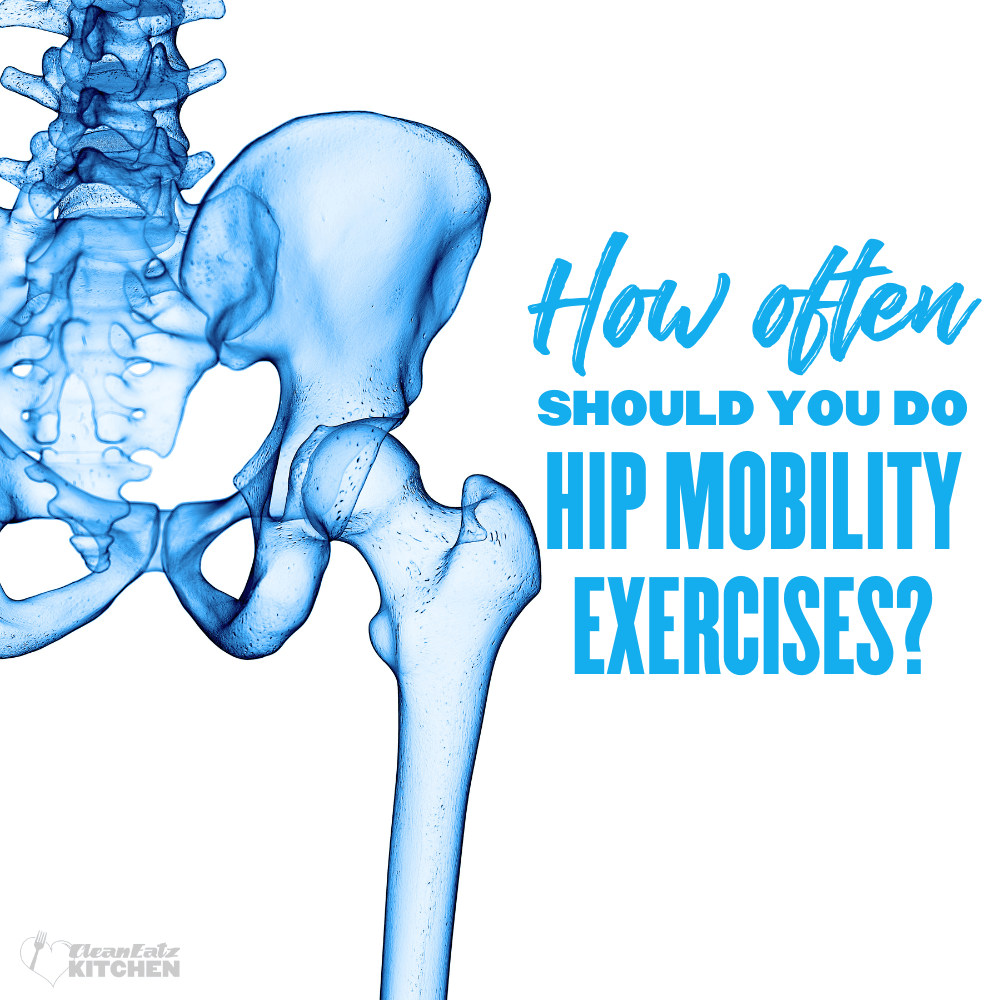
Does Aerobic Exercise Increase Mitochondria?
Exercises & Fitness
12 minute read
Has the massive world of fitness recently grabbed your interest? Perhaps, you’re in search of the ideal exercise plan for yourself? Whatever the case is, you’ll be glad to know that you’re in the right place because we’ve got just what you need!
If you’ve been involved in the fitness industry for a while, then you must’ve come across the term ‘Aerobic Exercise’ multiple times. We’re here to help you acknowledge what this means and how it proves to be an essential part of your fitness plan
What Does Aerobic Exercise Mean?
First and foremost, you must understand what aerobic exercises are in order to comprehend their role in exercise. Aerobic exercises are cardiovascular exercises that fulfill the primary purpose of making your heart pump faster. As a result, blood quickly flows through every part of your body and causes your lungs to take in oxygen at a much faster rate than usual.
Aerobic, also meaning “with oxygen”, basically highlights that your breathing determines the quantity of oxygen that reaches your muscles. As more oxygen reaches your muscles, more energy is produced by a process known as Aerobic Respiration, which involves the breakdown of stored nutrients, including fat, in the presence of oxygen.
With the help of this process, your body not only generates energy to complete physically demanding tasks but also burns fat deposited in your muscles. Different aerobic exercises come with varying intensities and can be performed for long periods of time, unlike other kinds of exercise.
How Can Aerobic Exercise Benefit You?
Now that you know what aerobic exercises are, the next step for you is to understand how these can prove to be beneficial for your health. Numerous health and fitness experts believe that aerobic exercise is arguably one of the most essential parts of your fitness routine, primarily because of the plenty of benefits that they’re associated with. As you continue to regularly perform aerobic exercises, you’ll notice a prominent increase in your strength, fitness, weight management, stamina, and mood.
While most of you might already be aware of the importance of cardio, for those who aren’t, here are some of the numerous benefits associated with aerobic exercise:
- Greater stamina and strength
- Decrease in your resting heart rate
- Effective weight loss due to the burning of fat
- Improved lung, heart, and muscle function
- Lower cholesterol level and opens up arteries
- Reduced risk of chronic disease or stroke
- Enhanced mood with lower stress, anxiety, and depression
- Increased life expectancy due to improved health
One of the key benefits of aerobic exercise is its ability to increase the number of mitochondria in the cells of the body. In this article, we will look at the relationship between aerobic exercise and mitochondria, and discuss the potential benefits of increased mitochondrial density.
Mitochondria & Their Role In the Body
Mitochondria are organelles found in the cells of all eukaryotic organisms, including humans. They are often referred to as the "powerhouses" of the cell, as they are responsible for producing the majority of the energy that the body needs to function.
Mitochondria are unique in that they have their own DNA and can replicate independently of the cell's nucleus. They are also involved in a variety of other cellular processes, such as the regulation of the cell cycle, cell growth, and cell death.
The Relationship Between Aerobic Exercise And Mitochondria
Aerobic exercise has been shown to increase the number of mitochondria in the cells of the body [*]. This effect has been observed in a variety of different cell types, including muscle cells, heart cells, and neurons. The mechanism by which aerobic exercise increases mitochondrial density is not fully understood, but it is thought to involve a process known as mitochondrial biogenesis.
Mitochondrial biogenesis is the process by which new mitochondria are formed in the cell. It is a complex process that involves the transcription and translation of mitochondrial DNA, as well as the assembly of new mitochondrial proteins. The process is regulated by a variety of different signaling pathways, including those triggered by changes in intracellular calcium levels and the activation of certain transcription factors.
Aerobic exercise has been shown to activate these signaling pathways, leading to an increase in the number of mitochondria in the cells. Studies have shown that regular aerobic exercise leads to an increase in the expression of genes involved in mitochondrial biogenesis, and a corresponding increase in the number of mitochondria in the cells.
Benefits Of Increased Mitochondrial Density
Mitochondria density refers to the number of mitochondria per unit area or volume within a cell. It is a measure of how densely packed the mitochondria are within a cell. The density of mitochondria can vary depending on the type of cell and the physiological state of the organism. In general, cells that have a high energy demand, such as muscle cells, have a higher density of mitochondria than cells that have a lower energy demand, such as nerve cells. There are numerous benefits of increased mitochondrial density including:
Improvement In The Body's Ability To Produce Energy
With more mitochondria, the cells are able to generate more energy, which can lead to improved physical performance. This is particularly true for athletes and other active individuals, who rely on their bodies to produce energy at high levels.
Improvement In Cardiovascular Health
Mitochondria are involved in the regulation of the cell cycle, cell growth, and cell death, which makes them important for maintaining the health of the heart and blood vessels. Studies have shown that regular aerobic exercise leads to an increase in the number of mitochondria in the heart and blood vessels, which can help to reduce the risk of cardiovascular disease.
Reduced Risk Of Chronic Diseases
Mitochondria play a crucial role in the development of chronic non-communicable diseases (NCDs) such as diabetes, heart disease, and cancer [*]. These organelles are responsible for generating the majority of a cell's energy, and when they function improperly, it can lead to cellular damage and an increased risk for NCDs. Therefore, increased mitochondrial density can lead to a reduction in the risk of chronic diseases.
Implementing Aerobic Exercise Into A Routine
Incorporating aerobic exercise into one's routine is an effective way to increase the number of mitochondria in the cells of the body and this can be done in a variety of ways. Many people choose to participate in organized activities such as running groups or cycling clubs, while others prefer to exercise alone. The most important thing is to find an activity that one enjoys and can maintain consistency with.
For those who are new to exercise, it is important to start slowly and gradually increase the intensity and duration of the activity. If you are looking to increase the number of mitochondria in your cells, it is recommended to engage in regular aerobic exercise for at least 30 minutes a day, at least 3-4 times a week. This can be done through activities such as running, cycling, swimming, or brisk walking.
Types of Aerobic Exercise
Aerobic exercise is any physical activity that increases your breathing and heart rate – resulting in improved cardiovascular fitness. It helps to burn calories, build stamina and even relieve stress. And while running, walking, biking and swimming are all aerobic exercise staples, there are a few other popular activities you may want to consider adding to your routine.
Here’s a quick breakdown of the different types of aerobic exercise:
- Jumping rope: A great calorie-burning aerobic workout that doesn't require any equipment. It can be done almost anywhere and provides a total body workout.
- Step aerobics: The traditional “stepping” class where you use an adjustable platform can help get your heart rate up as you go through movements tailored to the beat of the music.
- Dancing: From zumba to hip-hop, busting a move can do wonders for your cardiovascular system. Not only will it improve your endurance but it can also be a great way to have some fun while exercising.
- Hiking: Get out into nature and enjoy the view while working up a sweat! This low-impact form of cardio is perfect for anyone looking for an outdoor adventure while still getting their cardio in.
Whether you’re a gym buff or prefer outdoor activities, there’s an aerobic exercise that fits everyone’s preferences.
Simple Aerobic Exercises to Begin With
By now, you must’ve understood whether or not aerobic exercise is the right choice for you. So, let’s get started with how you can build a fitness routine consisting of aerobic exercise that would produce the optimum results for you.
Here are some examples of the most popular aerobic exercises that you can begin with.
Walking
If you want to make walking the main part of your exercise plan, then you need to complete at least 150 minutes of walking each week. This can be further broken down into 30 minutes 5 days a week. Furthermore, you may also use a fitness tracker to keep track of how many steps you’re taking every day. You can further work on it by gradually increasing your daily step count by 500 or 1,000 after every one or two weeks.
Running Or Jogging
Running and jogging are easily one of the most simple and effective aerobic exercises that could do wonders for your health. If you’re just beginning, then you can start with 20 to 30 minutes twice a week. Your running pace doesn’t need to be too fast at first; however, you can gradually increase it with every passing week.
Jump Rope
Jump rope is a fun exercise that won’t just ensure promising results in terms of health and fitness, but also make your fitness plan a little more fun. The recommended duration for this exercise is 15 to 25 minutes 3 to 5 times every week.
Swimming
If you have access to a pool, then swimming is a necessary part of your fitness plan. Swimming not only fulfills its primary purpose of raising your heartbeat but also trains each and every muscle of your body. The ideal duration would be 10 to 30 minutes 2 to 5 times every week.
Common Mistakes to Avoid During Aerobic Exercise
When doing aerobic exercises, it’s important to make sure you’re aware of common mistakes that can lead to bad habits or even injury.
Some common mistakes to avoid when doing aerobic exercise include:
- Not warming up and cooling down properly. Warming up is important for allowing your body time to adjust while cooling down helps your body normalize after a high-intensity workout.
- Not listening to your body and pushing yourself too hard. Make sure you’re in tune with how your body is feeling during the workout—listen if it feels too uncomfortable or if you need to take a break. Doing too much too soon can cause strain on your muscles, leading to potential injury or pain.
- Doing the same exercise session repeatedly without changing the intensity, duration, or type of exercise. Incorporating different kinds of aerobic exercises can help improve your fitness levels and prevent boredom that may lead to burnout.
- Failing to sufficiently hydrate and refuel with healthy snacks like fruits and nuts during exercise sessions lasting longer than 30 minutes. Proper hydration prevents dehydration and fatigue during exercise while eating healthy snacks helps keep you energized throughout the entire session!
By taking note of these tips, you can help ensure an enjoyable and safe aerobic workout experience each time!
By consistently following a fitness plan with the right aerobic exercises, you should begin to notice drastic results in no time! Although most of the listed benefits of aerobic exercise are hard to notice at first; however, they certainly are present and will become more prominent over the long run.
If you wish to make your fitness plan more effective, then you’re highly recommended to follow a diet plan that is best suited for your fitness routine. Clean Eatz Kitchen brings you a huge variety of delicious and nutritious meals that would keep your body energized every single day of the week. All you need to do is go to Clean Eatz Kitchen and build your desired meal plan to get your food delivered right to your doorstep.
Conclusion
Aerobic exercise increases mitochondrial density which has various benefits, including improved physical performance, cardiovascular health, and a reduction in the risk of chronic diseases. Ensure to consult with a healthcare professional before starting a new exercise routine, especially for those who have pre-existing health conditions.
FAQs
What exercises increase mitochondria?
Aerobic exercises also known as endurance exercises such as walking, cycling, and biking can increase mitochondria
Does exercising increase the number of mitochondria?
Yes, exercising can increase the number of mitochondria. Aerobic exercises signal pathways in the cell that promote formation of new mitochondria.
How do you increase your mitochondria level?
You can increase your mitochondria level by exercising. Exercise can lead to increased formation of mitochondria and this can have several health benefits including reduced risk of chronic diseases.
Related Articles
How Often Should You Do Hip Mobility Exercises?
7 minute read
How Many Exercises Per Muscle Group?
15 minute read
How To Make the Most of a Home Gym and Limited Space
6 minute read



